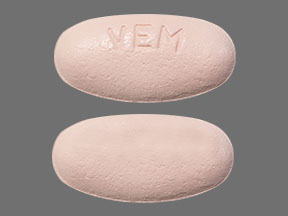Zelboraf Interactions
There are 628 drugs known to interact with Zelboraf (vemurafenib), along with 7 disease interactions, and 1 alcohol/food interaction. Of the total drug interactions, 231 are major, 375 are moderate, and 22 are minor.
- View all 628 medications that may interact with Zelboraf
- View Zelboraf alcohol/food interactions (1)
- View Zelboraf disease interactions (7)
Most frequently checked interactions
View interaction reports for Zelboraf (vemurafenib) and the medicines listed below.
- Actemra (tocilizumab)
- Adcetris (brentuximab)
- Aspirin Low Strength (aspirin)
- atorvastatin
- Biaxin (clarithromycin)
- bleomycin
- Blincyto (blinatumomab)
- Bosulif (bosutinib)
- Caprelsa (vandetanib)
- Cosentyx (secukinumab)
- Cotellic (cobimetinib)
- Cymbalta (duloxetine)
- Eltroxin (levothyroxine)
- Erivedge (vismodegib)
- Esbriet (pirfenidone)
- Hizentra (immune globulin subcutaneous)
- Imbruvica (ibrutinib)
- Jakafi (ruxolitinib)
- Kalydeco (ivacaftor)
- Kynamro (mipomersen)
- Luxturna (voretigene neparvovec ophthalmic)
- Lyrica (pregabalin)
- Mekinist (trametinib)
- metformin
- Nexium (esomeprazole)
- Nydrazid (isoniazid)
- Sabril (vigabatrin)
- Stribild (cobicistat / elvitegravir / emtricitabine / tenofovir disoproxil)
- Tafinlar (dabrafenib)
- tamsulosin
Zelboraf alcohol/food interactions
There is 1 alcohol/food interaction with Zelboraf (vemurafenib).
Zelboraf disease interactions
There are 7 disease interactions with Zelboraf (vemurafenib) which include:
- lung toxicity
- cutaneous malignancies
- dermatological reactions
- hepatic impairment
- QT prolongation
- renal impairment
- visual complications
More about Zelboraf (vemurafenib)
- Zelboraf consumer information
- Compare alternatives
- Pricing & coupons
- Reviews (4)
- Drug images
- Side effects
- Dosage information
- During pregnancy
- FDA approval history
- Drug class: multikinase inhibitors
- Breastfeeding
- En español
Related treatment guides
Drug Interaction Classification
| Highly clinically significant. Avoid combinations; the risk of the interaction outweighs the benefit. | |
| Moderately clinically significant. Usually avoid combinations; use it only under special circumstances. | |
| Minimally clinically significant. Minimize risk; assess risk and consider an alternative drug, take steps to circumvent the interaction risk and/or institute a monitoring plan. | |
| No interaction information available. |
See also:
Further information
Always consult your healthcare provider to ensure the information displayed on this page applies to your personal circumstances.


